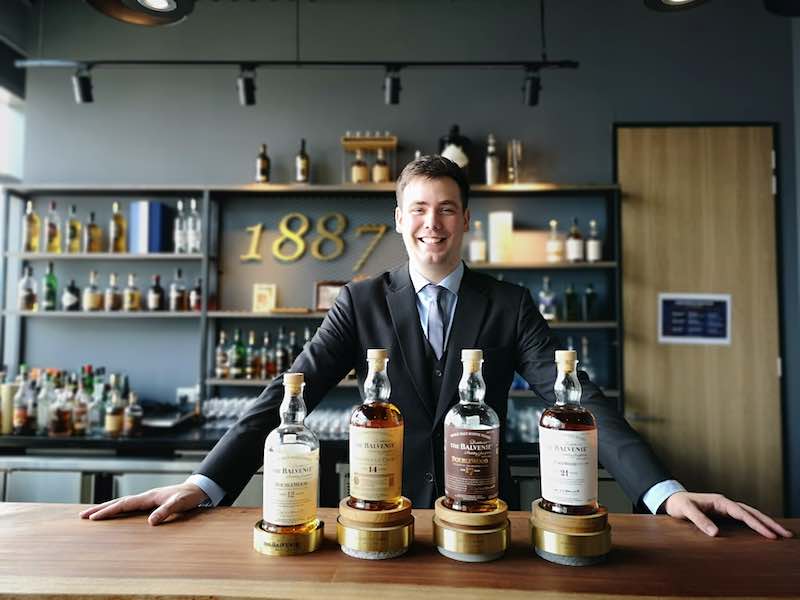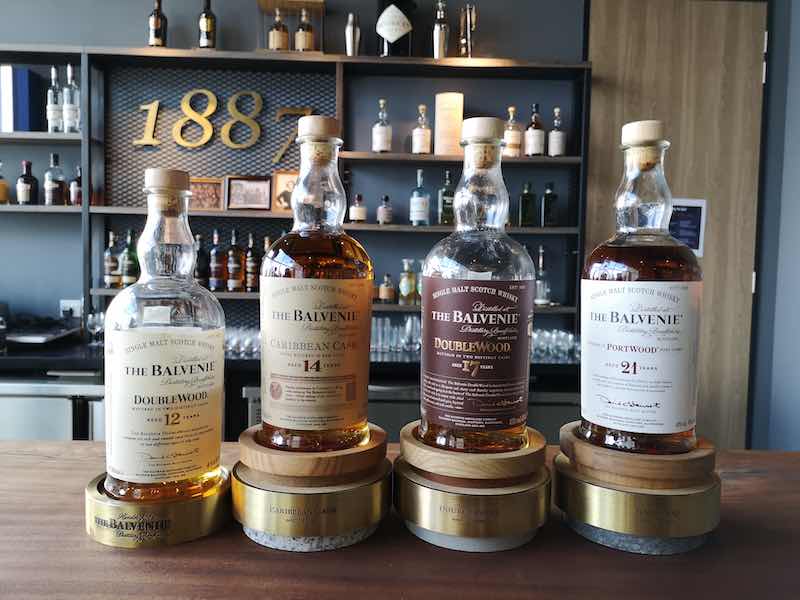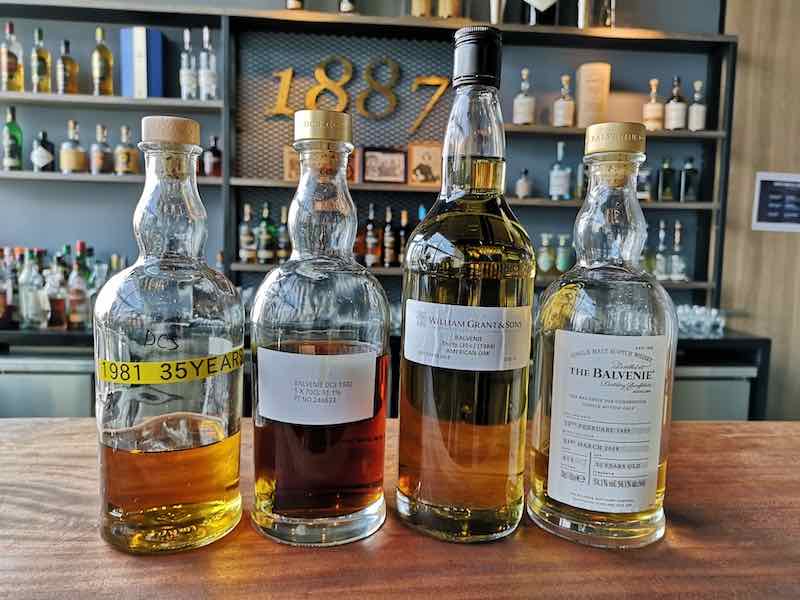Virtual Tour of The Balvenie Distillery
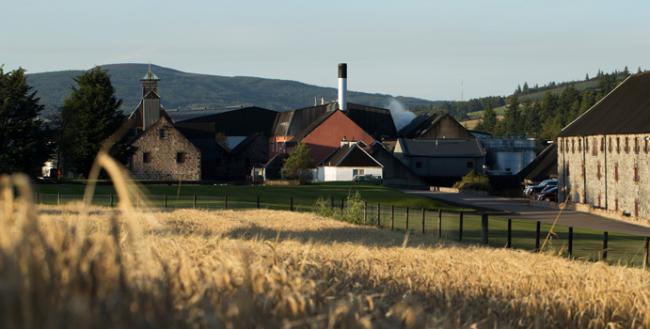
With international borders still close in most countries, travel is made impossible. For those of us who miss Scotland and her beautiful people, we will have to wait some more. We were, therefore, absolutely delighted when William Grant and Sons invited us to go on a virtual distillery tour at The Balvenie. The highlight, however, was the promise that David Stewart, Malt Master for The Balvenie, would be available for a chat.
A wee trip to Speyside
Some of you know that I love The Balvenie, especially the single barrel range of 12 and 15 years old. I also adore their tea-spooned blended malt, Burnside, with its huge fruit notes and oakiness that does everything to lift the whisky up. Therefore, a tour at The Balvenie distillery is a big treat. I turned up at the Youtube page bright and early (well, in Scottish time at least), and waited for the tour to start.

Our tour started with Brett Bayly turning up on screen looking all prim and proper with his suit. He looked a wee bit uncomfortable, but hey, he was enjoying The Balvenie 12 years old Doublewood. I think that should take away all the discomfort! Next online was Gemma Paterson, the lady of the distillery. Gemma is the Global Brand Ambassador for The Balvenie, and she is a familiar figure for anyone who knows The Balvenie well. James was last onboard, but he was sitting happily onsite at The Balvenie distillery, ready to bring us on a tour!
As with all proper distillery tours, we started at the glorious floor malting, which The Balvenie has kept intact since 1929.
The Malting Floor
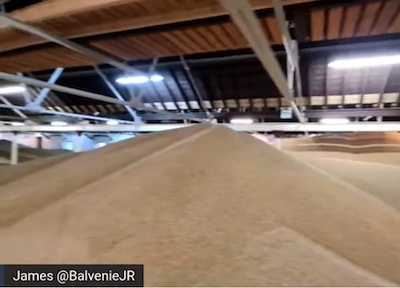
It was the first time that I saw such a huge malting floor. I did not manage to visit Speyside on my last trip to Scotland, but I did see a malting floor at Laphroaig distillery. Compared to what I saw during the virtual tour at The Balvenie, the malting floor at Laphroaig was smaller. The Balvenie distillery also employed very manual processes. The malt man loads up a machine that would transport a batch of raw barley from the floor to the steeping tank, where he adds water to encourage the germination process to start.
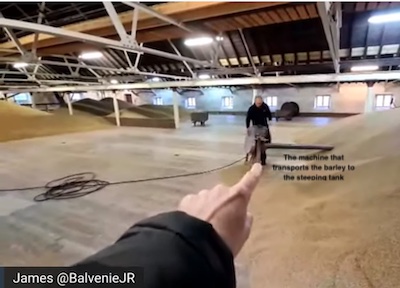
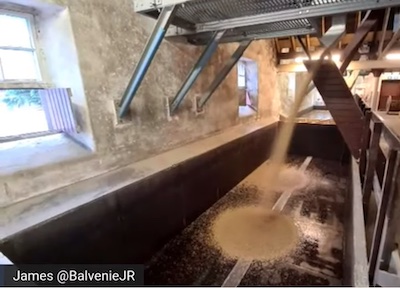
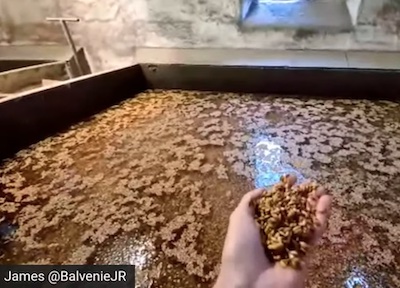
Once the malt man completes the steeping process, he lays the barley on the ground to grow. After that, the barley goes into the kiln, where they dried the barley either with coal fire or peat. Let’s go take a look at their kiln.
The Kiln
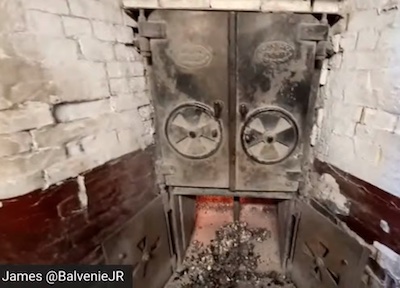
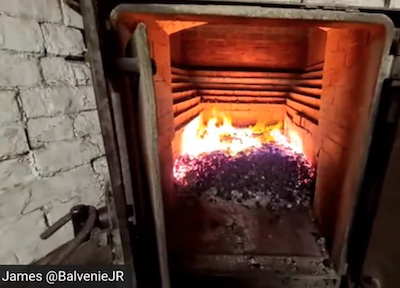
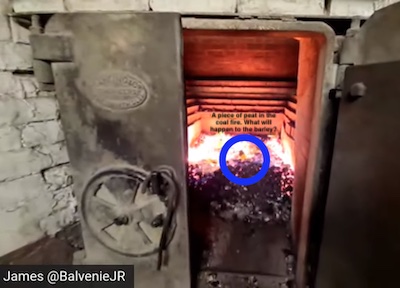
James took us down to see the fire, where it was warm and toasty for him. The kiln looked cool, but it’s very hot to touch. Using a metal hook, he eased the door opened and showed off the gentle fire. The small fire generated enough heat to dry and stop the germination of the barley, but not hot enough to burn them. As a real life experiment, he took a small piece of peat (the distillery produces their own peated malt too) and throw it into the coal fire. Will the peat contributes to a small phenol level in the current kilning process? Perhaps.
The Still House
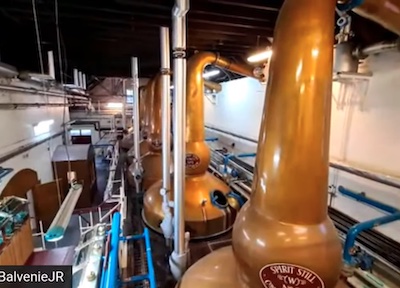
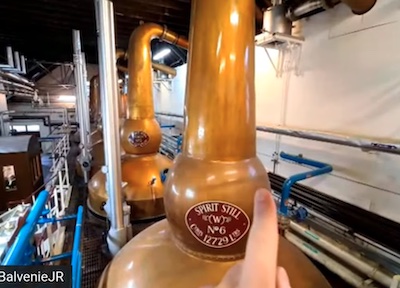
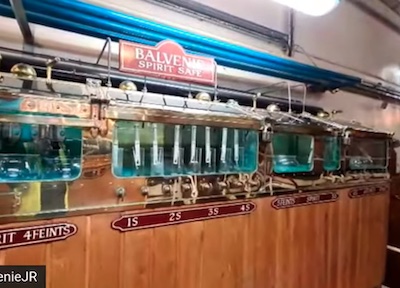
Next, we headed off to the still house, where The Balvenie distillery produces their new make. The distillery houses 5 wash stills and 6 spirits stills. The wash stills have a capacity of 9100 litres which the spirits stills hold 12,750 litres each. The total distillation hours are 15.5 – 16.5 hours. Balvenie takes the cut of the heart between 74% to 64% abv, pretty much like most other distilleries. Finally, 4250 litres of spirits will be obtained from the original 53,000 litres of wort. A word on the cut of the heart – the peated malt has a lower and more precise cut that is lower than 70% abv.
The second picture showed James’ finger on the bulb of the spirit stills. This is an important part where the shape of the copper still encourages more reflux, creating a higher rectification during distillation. The higher rectification creates a cleaner spirit with fruity notes. The final step of the distillation process is at the spirit safe. Here, the still men will work manually to check on the spirit coming off the still. The new make is collected between 74% abv to 64% abv for the unpeated malt. The cut of the heart is lower when they are distilling peated malt.
Warehouse 24
A distillery tour is not complete without a peep into the warehouse. James took us to warehouse 24, where some of the older casks of Balvenie are still sleeping.
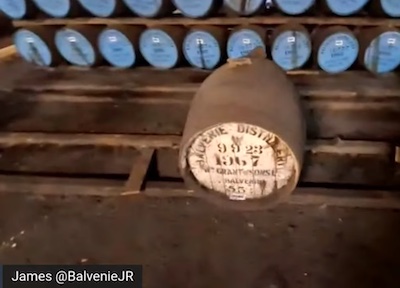
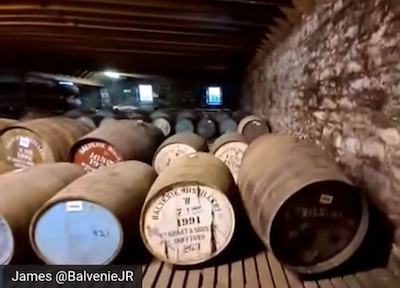
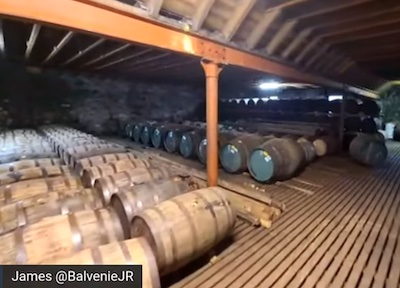
It is a huge warehouse but not filled to the brim with casks. Each cask is given enough space to breathe and do its magic on the whisky it is holding. Some of these casks dated back to the days where David Stewart, the Malt Master of The Balvenie, first became the Malt Master!
In the warehouse, James shared the story of the copper dog, a device used to sneak whisky out right under the watchful eyes of the excisemen. There is a story behind the copper dog and a man named Dennis, but I would leave the story untold. It’s more exciting to hear it first hand when you visit The Balvenie Distillery after the pandemic. James demonstrated how a man can use the copper dog to draw whisky out of a cask. It was pretty exciting, but perhaps, he was making too much noise trying to “steal whisky out of a cask”!
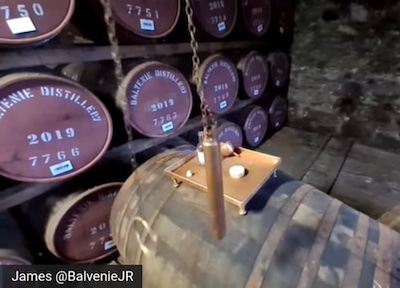
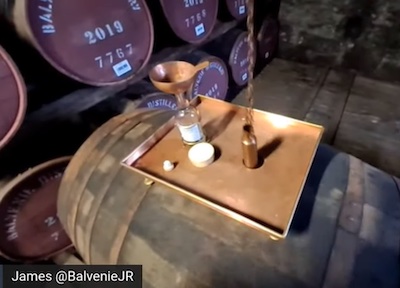
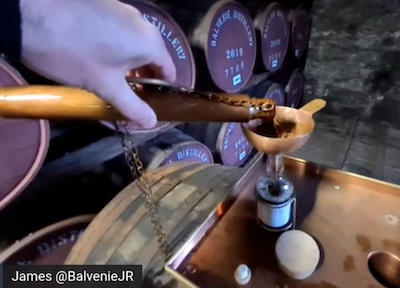
The Copper Dog
A copper dog is a device usually made of copper, although it can be made in stainless steel. The first picture showed the copper dog as it is, a container with a long chain. If you are a warehouse man in the past, you may get your mate to distract the exciseman and you use the copper dog to draw whisky from the cask. All you need to do is to drop the copper dog into the cask, draw it back up, and cap it. Put it back into your pockets and share a dram with your mate later on.
In James’ demonstration, he poured the whisky into a wee glass container to show us what the whisky was – a Balvenie 16 years old in a sherry butt.
Meeting David Stewart, the Malt Master at The Balvenie Distillery
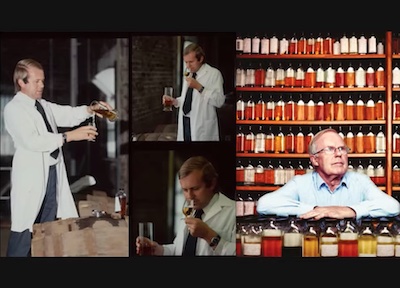
At the end of the virtual tour, Gemma Paterson introduced David Stewart, the Malt Master. David joined the distillery in his youth (see the picture above) and has spent his entire career at WG&S. David is the most experienced malt master in Scotland, having 59 years of experience. He also nosed about 500,000 casks across his career. Meeting David was a treat, even if it was an online chat. He shared his experience of creating one of the most well-loved Balvenie expression – The 12 Years Old Doublewood.
David designed the “wood finishing” process in 1982 (gulp! I wasn’t even born yet) and began to experiment with it. Over time, he developed a sound concept and used it for the 12 Years Old Doublewood. To make the whisky, David takes a batch of whisky matured in American ex-bourbon casks and vat them together before transferring them into sherry butts for 9 months. Then the whisky are again put into a marrying tun for another 2 to 3 months before bottling. While each bottle of the Doublewood is labelled as a 12 years old, the process makes the whisky just slightly short of 13 years old.
The Balvenie 12 Years Old Doublewood
The Doublewood launched in 1993, and immediately took the limelight. The whisky gains its distinctive character from its maturation in two wood types, and these casks give the whisky unique characteristics that would not be available in the other wood. While the bourbon casks soften and give the whisky its roundedness, the sherry casks add depth and flavour to the whisky. It is truly one of the most delectable offerings from The Balvenie!
Comments from WhiskyGeeks
We really enjoyed the tour, and also the media kit that was delivered to us. It holds a copper dog (yay!), the beloved Balvenie Glencairn glass, a 12 Years Old Doublewood and a 12 Years Old Triple Cask. The team is definitely looking forward to drinking the whiskies. The tour gave us a good overview of the distillery and we are now looking forward to visiting the distillery in Scotland for real when the pandemic is over. We want to thank Gemma, James and Brett for the lively tour and David for taking his time out to speak with us.
For now, let’s drink and stay safe! Slàinte!

